Last updated on February 18, 2024
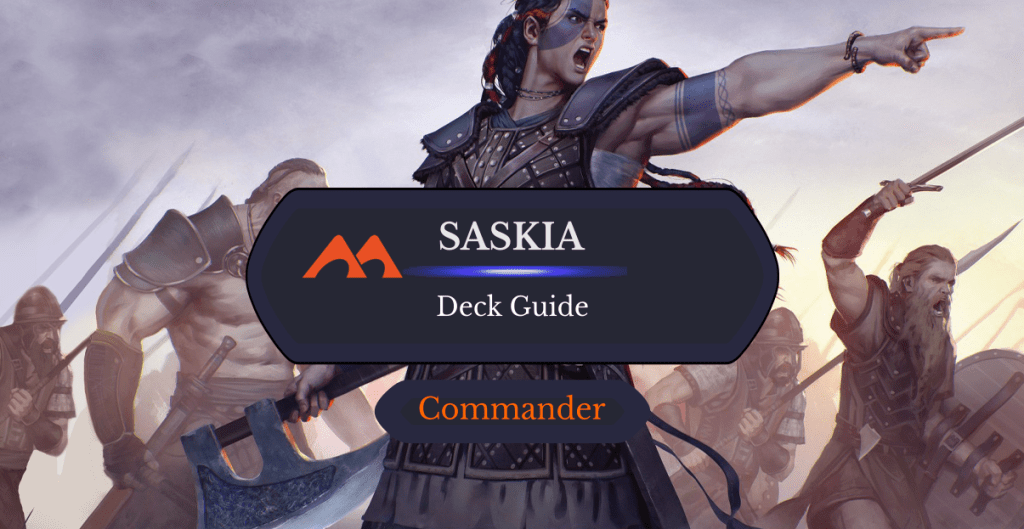
Saskia the Unyielding | Illustration by Greg Opalinski
Commander 2016 was a product that promised huge shockwaves throughout Commander. The excitement of its announcement was that it would print five 4-color legendary creatures – the first 4-color legends. Until this point, EDH players who wanted four colors would rule zero the Nephilim creatures from Guildpact, with their names still describing the color combinations.
Of course, C16 also introduced the partner mechanic and some of the strongest commanders, like Tymna the Weaver and Thrasios, Triton Hero. While the original partners have had a greater impact than the 4-color legends, that doesn’t mean those first legendary creatures aren’t worth building around.Let’s look at the most aggressive general of the lot, Saskia the Unyielding!
The Deck
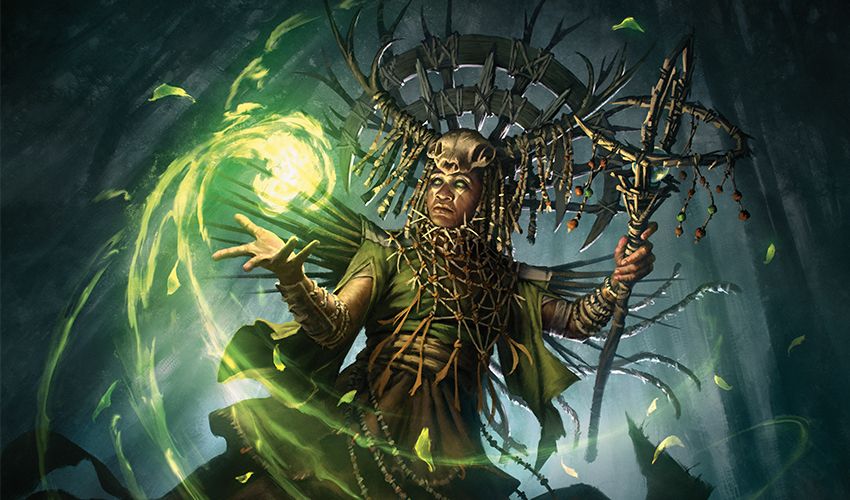
Katilda, Dawnhart Prime | Illustration by Bryan Sola
Commander (1)
Planeswalkers (2)
Domri, Anarch of Bolas
Dihada, Binder of Wills
Creatures (37)
Avacyn's Pilgrim
Birds of Paradise
Delighted Halfling
Elves of Deep Shadow
Esper Sentinel
Ignoble Hierarch
Mother of Runes
Skrelv, Defector Mite
Biophagus
Bloom Tender
Hajar, Loyal Bodyguard
Jirina, Dauntless General
Katilda, Dawnhart Prime
Merry, Esquire of Rohan
Ruby, Daring Tracker
Thalia, Guardian of Thraben
Adeline, Resplendent Cathar
Anafenza, the Foremost
Faeburrow Elder
Gylwain, Casting Director
Loran of the Third Path
Thalia, Heretic Cathar
Torens, Fist of the Angels
Tymna the Weaver
Captain Sisay
Gandalf, White Rider
Halana and Alena, Partners
Jetmir, Nexus of Revels
Myrel, Shield of Argive
Shanid, Sleepers' Scourge
Solphim, Mayhem Dominus
Éowyn, Fearless Knight
Arvad the Cursed
Karlach, Fury of Avernus
Urabrask the Hidden
Aurelia, the Warleader
Craterhoof Behemoth
Instants (7)
Path to Exile
Swords to Plowshares
And They Shall Know No Fear
Assassin's Trophy
Despark
Flawless Maneuver
Clever Concealment
Sorceries (9)
Prismatic Ending
Forth Eorlingas!
Nature's Lore
Night's Whisper
Three Visits
Winds of Abandon
Taunt from the Rampart
Urza's Ruinous Blast
Primevals' Glorious Rebirth
Enchantments (2)
Flowering of the White Tree
Guardian Project
Artifacts (7)
Sol Ring
Arcane Signet
Lightning Greaves
Sword of the Chosen
The Irencrag
Relic of Legends
Doors of Durin
Lands (35)
Arid Mesa
Bountiful Promenade
City of Brass
Command Tower
Exotic Orchard
Fabled Passage
Forest x3
Godless Shrine
Great Hall of the Citadel
Indatha Triome
Jetmir's Garden
Mana Confluence
Marsh Flats
Minas Tirith
Mountain
Overgrown Tomb
Path of Ancestry
Plains x5
Plaza of Heroes
Prismatic Vista
Sacred Foundry
Savai Triome
Spectator Seating
Stomping Ground
Swamp
Temple Garden
Vault of Champions
Windswept Heath
Ziatora's Proving Ground
All Sakia wants from you is aggression between having haste and her ability to share damage with your opponents. Thus, this casual deck is interested in playing to the board and rushing our opponents down with a flurry of attacking creatures. This isn’t to say that it’s just a generic good-stuff pile; those are for the partners.
While Sakia herself doesn’t particularly ask for any subthemes, this deck focuses on getting the most from legendary creatures, especially with the help of some cards from the recent Lord of the Rings set. The focus on legends lets us use tools like Flowering of the White Tree that would otherwise be weak.
We have an additional subtheme with human typal synergies. It’s not very pronounced, as it just so happened that many of our legendary creatures, including Saskia, were already legends, so a few typal synergies cards snuck in. With the power of living legends, we’ll make the table yield before our mythic might!
The Commander
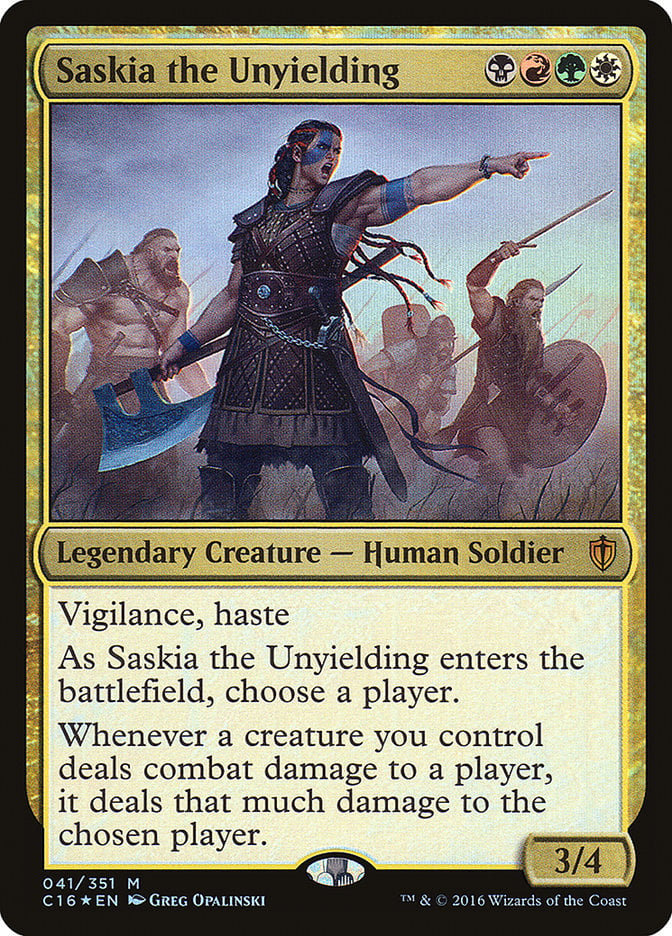
It’s not easy to be an aggressive deck in Commander. You need to kill three opponents at forty life for a total of 120 damage. Creature decks often lean on powerful finishers like Craterhoof Behemoth to find the extra damage (and we’re no exception). Aggro decks lean on a low curve of impactful creatures that don’t always thrive amid EDH’s focus on big mana and bigger spells.
Saskia the Unyielding seeks to even this playfield by letting your combat damage affect more than one player, effectively reducing the damage you need to deal by a third. This could lead to some political alliances later in the game, where two players who are low on life agree to stop you from killing them both, but that depends on the table.
Saskia’s offensive power enables this deck better than partner combinations that could let us use the same colors. Sure, Tymna + Tana would give us the Dune-brood colors, but we would also lose out on a fair amount of damage. Sakia effectively doubles the combat damage we deal by hitting another player.
The ability can also be useful to circumvent troublesome decks. For example, a pillow fort deck that wants to hide behind Ghostly Prison and the like, or decks leaning on No Mercy to stop attacks. Saskia takes the damage directly to them.
Human Synergies
Since the human subtheme is so light and incidental, the deck only has a few cards to cater to it. That said, they still pull a lot of weight and offer decent value throughout the game.
Katilda, Dawnhart Prime provides a huge mana boost. It can be especially useful when dealing with a stalled board state; most of our creatures can tap for mana, so they can help dump our hand if we can’t attack. The activated ability can also be a mana sink in such stalled board states.
And They Shall Know No Fear has quite the wordy title but a simple effect: It protects our creatures from board wipes, which are something to be feared. It doesn’t save all our creatures but protects most of them for relatively little mana. The small power buff adds up with Saskia.
Jirina, Dauntless General provides similar protection to our humans from board wipes but can also protect us against spot removal. A little incidental graveyard hate is always welcome, as many broken things begin in the graveyard.
Legendary Synergies
Legendary creatures have a much stronger synergy in the deck and one of its central themes, so it has much more support.
Hajar, Loyal Bodyguard, provides great pressure as two-mana 3/3 and gives us yet another layer of protection for our creatures.
Primevals' Glorious Rebirth looks like more wrath protection (and kind of is), but it’s also a great finisher. At the end of a grindy game with removal and trades going back and forth, this can turn a close game in your favor.
Urza's Ruinous Blast is an often asymmetrical wrath that works as a finisher in many cases. We might lose a few mana dorks, but our opponents often lose much more, clearing the way for great attacks.
Merry, Esquire of Rohan attacks and draws cards, which is about all this deck could want from a 2-mana creature.
Captain Sisay provides the deck with an invaluable, repeatable tutor. While she can find many of our best creatures, Sisay’s tutor can also find our legendary sorceries or planeswalkers, depending on the situation.
Shanid, Sleepers' Scourge, is an invaluable source of card advantage. It’s a second copy of Guardian Project. Having both in the deck ensures a steady stream of cards to keep the pressure on our opponents.
Arvad the Cursed fulfills a simple role: He makes our creatures big. He also does a lot to stabilize us. Since Saskia’s ability makes the individual creatures deal damage, we benefit from his lifelink twice.
Sword of the Chosen is a lot of fun. This deck has abundant targets, and +2/+2 is a significant enough buff to mess up a lot of combat math for your opponents. It could even become a political tool, as you can buff opposing legendary creatures.
Flowering of the White Tree is nothing but pain for your opponents. Giving your creatures +2/+1 adds tons of pressure, but Ward 1 is just enough protection that removing your creatures one at a time becomes annoying.
Dihada, Binder of Wills is fantastic. Her uptick provides offense and defensive pressure, while her downtick offers both mana and cards. If her ultimate doesn't outright win the game, it leaves you heavily favored.
Stax Pieces
To be clear, this isn’t a stax deck – there’s just a lot of overlap between stax cards and legendary creatures. None of these pieces lock your opponents out of the game – they’re just roadblocks that slow the game down.
Thalia, Guardian of Thraben might be the best two-mana play in the deck. She impedes many decks that rely on cards like Talismans and Three Visits to curve out smoothly. Some strategies need to find a removal spell before they can remove this.
Thalia, Heretic Cathar slows our opponent’s plans by tapping most of their lands. It gets better and better the more colors our opponents are on. Making your opponents’ creatures come into play tapped also aids the aggressive deck, as it’s much harder to mount a defense when you can’t block. That’s why we’re playing Urabrask the Hidden as well.
Domri, Anarch of Bolas is likely close to our 99th card but pulls his weight. The buff isn’t wholly inconsequential, but we’re mostly interested in the protection from counters and the removal he represents.
Anafenza, the Foremost, provides a lot of pressure on board and some incidental graveyard hate that’s more useful than it may seem.
Esper Sentinel might not be a legend, but we have a few ways to buff our creatures, and this usually draws at least one card or eats a removal spell that clears the way for our better creatures. Either way, you get a load of value for one mana.
Myrel, Shield of Argive protects us from interaction on our turn and represents a hell of a threat. If left unchecked, Myrel and her army of Soldier tokens can overwhelm a game. She’s a great follow-up to a wrath, as she’ll rebuild the board. A couple of our other creatures, including Saskia, happen to be soldiers as well.
Impactful Plays
Synergy is nice, but aggressive decks also need some impactful cards to jam and apply pressure. Thankfully, legendary creatures love showing off, and many are quite strong.
Adeline, Resplendent Cathar is another creature that can run away with a game if your opponents aren’t quick enough with their removal. The extra tokens go well with all our anthems.
Torens, Fist of the Angels, doesn’t go wide quite as quickly as Adeline, but his tokens make up for it by buffing themselves alongside our larger creatures.
Gylwain, Casting Director is a new card, but getting a ton of free Roles seems like a great way to advance our board state. Our creatures, including tokens, get +1/+1 just for coming into play. I’m partial to the Sorcerer Role for card selection, though the Monster Role gets better and better in the late game to prevent chump blocking.
Tymna the Weaver is a great commander for an aggressive deck looking to play a bunch of cheap creatures, so we’re happy to keep her in the 99.
Jetmir, Nexus of Revels, and Craterhoof Behemoth are our two best finishers that pretty much end the game whenever they come down. Jetmir is one of Captain Sisay’s strongest tutor targets.
Doors of Durin can be a risky investment, as our opponents can hit it with Nature's Claim and the like before we attack, but one worth the mana. You’ll never draw a land after this since we want to get into combat every turn, and adding free pressure is what this deck wants.
Éowyn, Fearless Knight, takes a player out of the game. Depending on the board state, giving your team protection from one color is enough to kill one player, especially later in the game when life totals get low.
Karlach, Fury of Avernus, and Aurelia, the Warleader, both give us a few extra combats to pummel our opponents with. Extra combats aren’t quite the same as extra turns, but this deck capitalizes on them.
Forth Eorlingas! does so much to make Boros decks stronger. It scales obscenely well with mana, adding 10 or more power later in the game. Becoming the monarch helps keep pressure on our opponents, though you don’t need much since you’ll win shortly after playing this.
Taunt from the Rampart is another LTR card that does an unreasonable amount of work. At least one player should lose when you cast this, if not more. Goading all your opponent’s creatures makes them kill each other, and preventing blocks stops any trickery that keeps them alive. This card sees the game end within a turn cycle or two.
The Mana Base
Our mana base begins with a bunch of dorks that fix our mana. Elves of Deep Shadow and Avacyn's Pilgrim provide an additional color apiece, while Birds of Paradise and Delighted Halfling give us all the fixing our legendary creatures could dream of.
Bloom Tender and Faeburrow Elder provide the best mana advantage possible for a multicolor deck like this.
Three Visits and Nature's Lore are particularly powerful ramp pieces because they can fetch Triomes for fixing or untapped lands for good sequencing.
The Irencrag is a bit of a risky mana rock because it’s colorless, but it provides a bit of value by giving us a way to use excess mana once we have enough resources. Relic of Legends is the best rock in the list next to Sol Ring for the amount of fixing and mana it produces in our list of legends.
Great Hall of the Citadel and Plaza of Heroes provide fixing directly to our legends. Beyond these, the mana base utilizes a combination of Triomes, fetch lands, and shock lands to keep our four-color mana base on track, alongside Command Tower, City of Brass, and Mana Confluence as “perfect” fixers.
The Strategy
This deck is all about sequencing. We have a few tap lands because of the Triomes. Taplands aren’t great for a deck that wants to curve out, but it’s not as bad as failing to cast our spells entirely.
The key is finding the best way to sequence our spells around the fast lands. All our mana accelerants can help keep us on curve with the tap lands and apply pressure as quickly as possible.
Since we have some great finishers in Taunt from the Rampart, Jetmir, Craterhoof, and so on, finding one of them becomes pretty important. They require a wide board, so we want to focus on getting creatures into play. It's vital to attack frequently to maximize Saskia's ability.
Saskia’s ability has two uses: spreading damage across multiple players or killing one player outright. If we attack the chosen player, they effectively take double damage. This can be a great way to deal with a problematic player quickly; say, you want to rush down a control player before they can start casting wraths.
The biggest downside is this can turn that player against you and let the other two players develop relatively untouched; if you throw all your pressure at Player A, they’re likely to respond with all their pressure, leaving Players B and C all the time they need to develop.
If you choose to spread the damage by sending Saskia at the players you didn’t choose with her ability, try marking the player you want to attack the least. This could be a Go-Shintai of Life's Origin player that’s likely on a pillowfort strategy, a Fynn, the Fangbearer deck you don’t want to run your creatures into, and so on. We can’t play Saskia sooner than turn three unless we get exactly Sol Ring, Arcane Signet, and a mana dork in our opening hand, so you’ll have some time to decide who you want to attack.
Combos and Interactions
We’re playing a casual deck focused on combat damage, so we don’t have any combos. There are a couple of interactions with Saskia’s ability that are worth looking at.
Firstly and most importantly, her ability’s damage does not count as combat damage. Solphim, Mayhem Dominus is the only card in the list that utilizes that. Saskia also doesn’t deal the damage herself, so creatures with lifelink or similar abilities will gain life.
Our creatures do need to deal combat damage to trigger Saskia, so we won’t get extra damage if our opponents give themselves protection or use a Fog effect or anything like that. Since most fogs only prevent combat damage, they can’t be used to prevent Saskia’s trigger if combat damage has already been dealt.
Saskia’s marking ability never targets the play; you choose a player when she comes into play, and the damage gets dealt to the chosen player. Because no part of the ability targets, your opponents can’t protect themselves with effective that give them hexproof, like Leyline of Sanctity or Aegis of the Gods. The damage can still be prevented by things like protection or Everybody Lives!.
Rule 0 Violations Check
This deck should clear every rule 0 conversation you have. There are no infinite combos, we don’t have a ton of broken fast mana or anything like that, and the deck utilizes the fairest win condition possible.
Budget Options
Let’s look at a few budget options that can help make the deck more affordable.
Most of the cost is in the mana base. Fetch lands, Triomes, and shock lands cost a pretty penny. These can get replaced with a variety of lands, with the Triomes having an especially good replacement with the taplands from Alara and Tarkir. Once you lose the Triomes, cutting the fetches for other lands becomes much easier.
Esper Sentinel provides lots of card advantage at a steep cost. Glademuse is an intriguing option that taxes a different kind of spell.
Captain Sisay can swap out of the less repeatable Time of Need so you can save some money without sacrificing consistency.
Craterhoof Behemoth has a number of effective replacements, including Overwhelming Stampede or the classic Overrun.
It’s hard to match the lethality of Forth Eorlingas!, but Secure the Wastes works well with our anthems.
Other Builds
This version of Saskia leans heavily on legendary synergies, but one could look for a more general aggro version of the deck that focuses on the best creatures in our four colors. A few that didn’t quite make it include Blade Historian, Ohran Frostfang, and Bloodthirster.
You could also build a much more stax-oriented build. This deck has a small stax package, but these are the perfect colors to add cards like Archon of Emeria, Kambal, Consul of Allocation, Aven Mindcensor, and more.
Commanding Conclusion
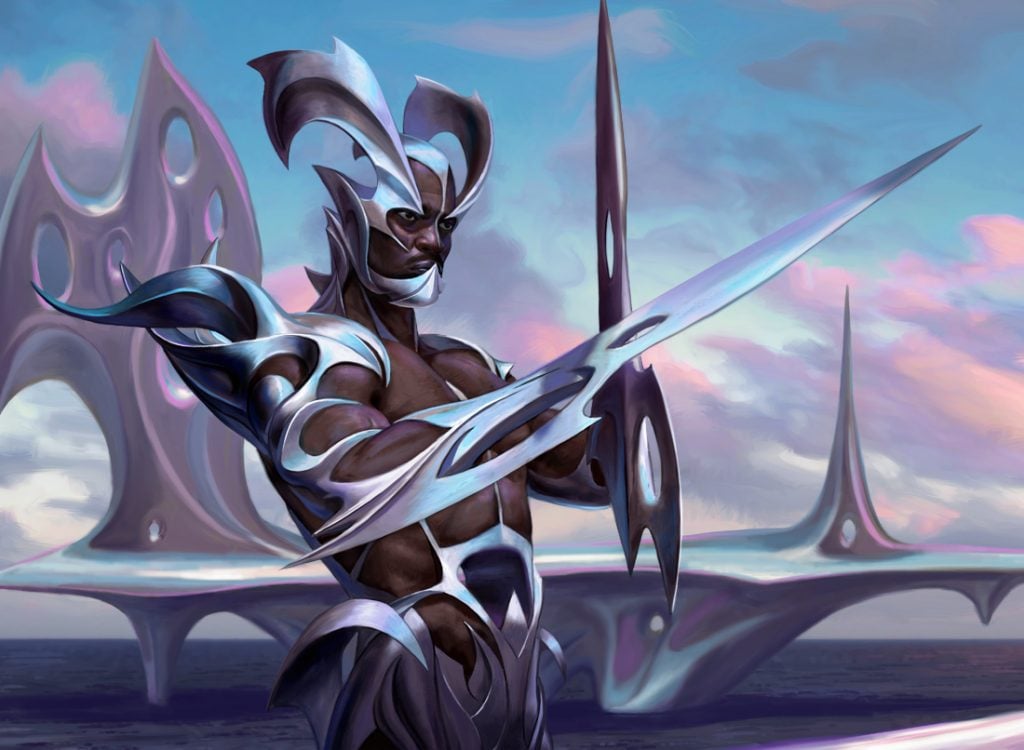
Esper Sentinel | Illustration by Eric Deschamps
While the four-color commanders from Commander 2016 don’t seem to have as much of an impact on the game as the partner cards that accompanied them in the 99, they’re still powerful commanders worth building around.
Saskia the Unyielding helps combat some of the challenges aggressive Commander decks need to overcome, primarily the sheer amount of life they have to attack through. You can make her narrow, leaning on typal or legendary synergies, or broaden the deck. All she asks is that you attack and attack often!
What’s your favorite four-color commander? Do you like the partners? Let me know in the Draftsim Discord or the comments below!
Stay safe, and keep aggressive!
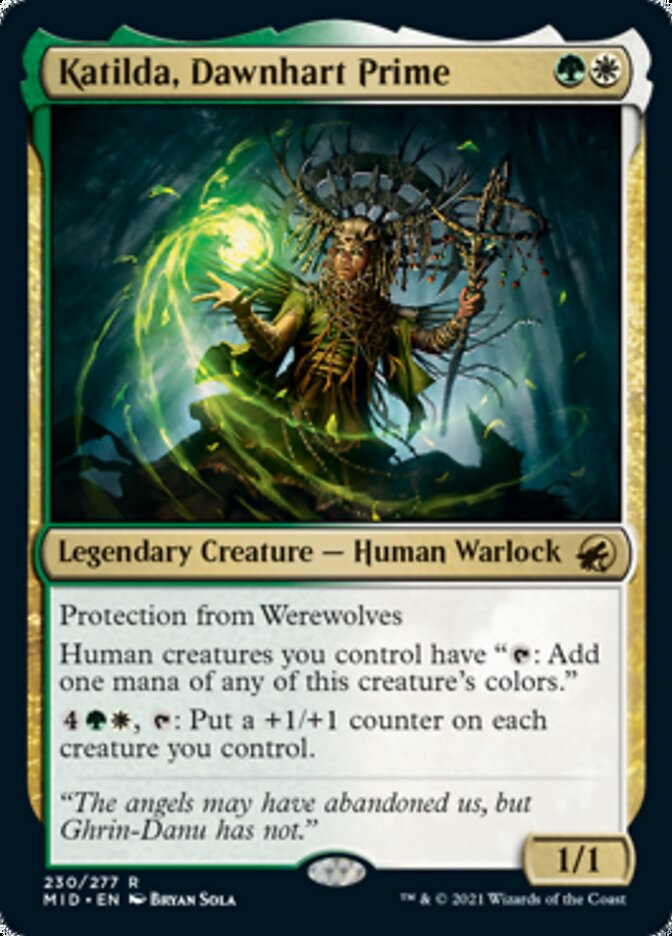




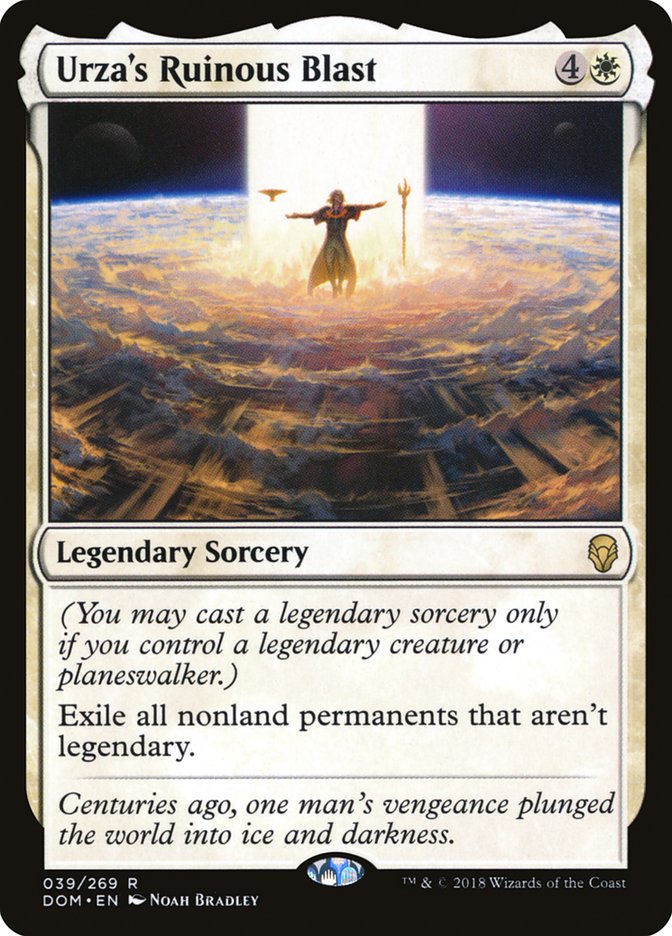
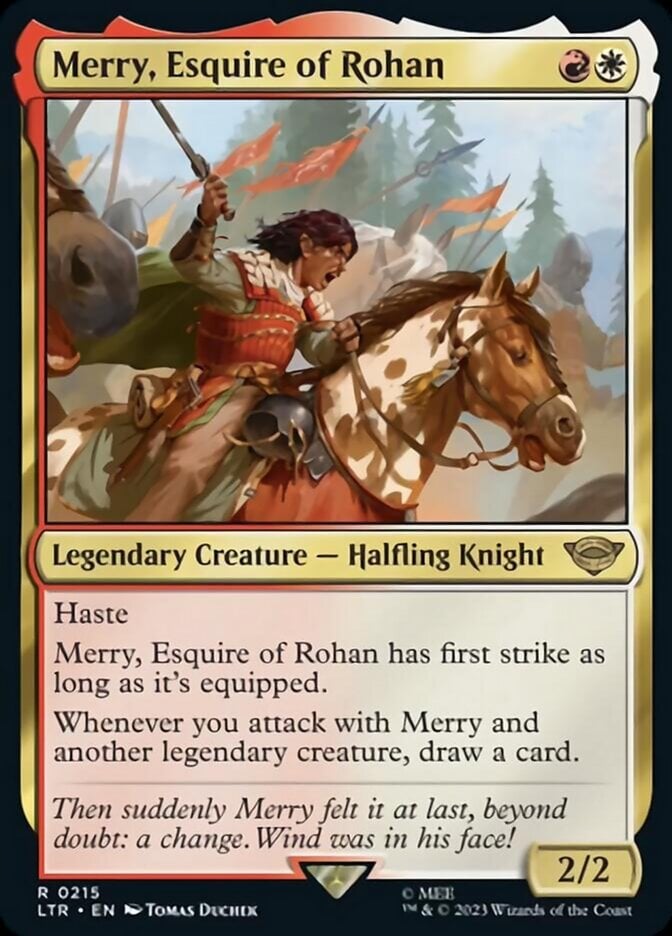




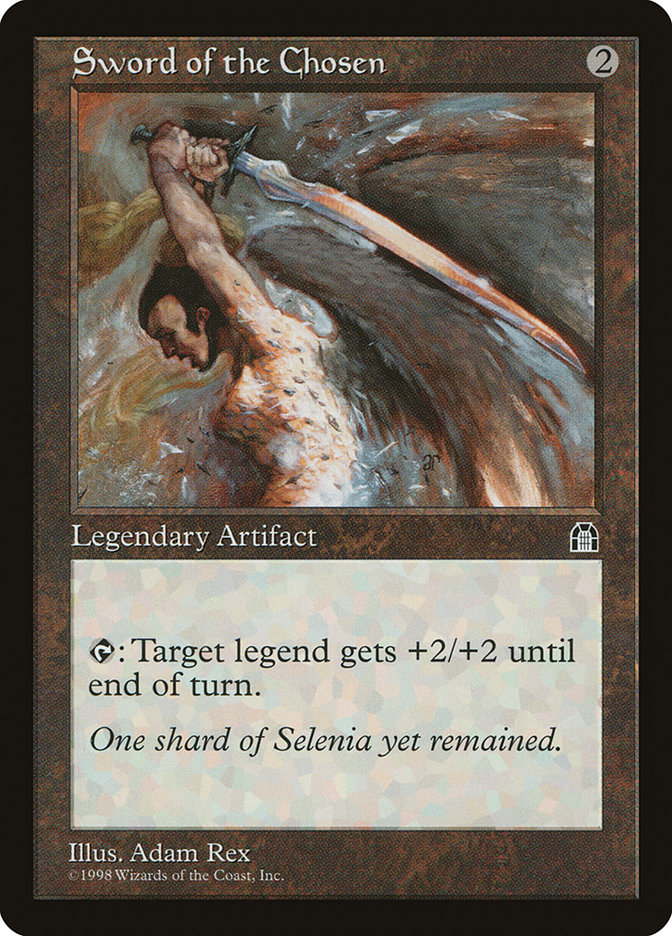
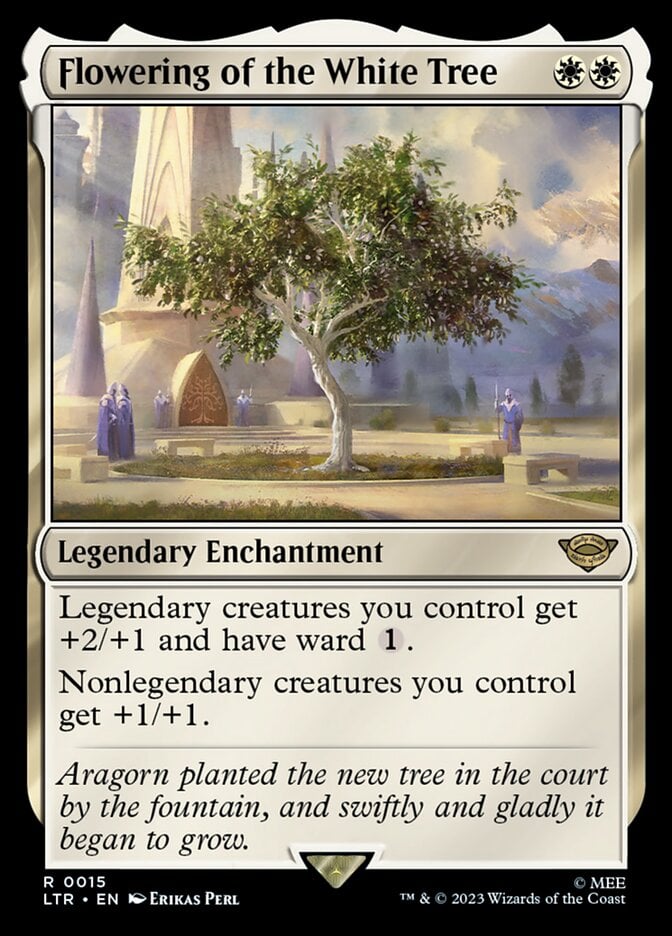


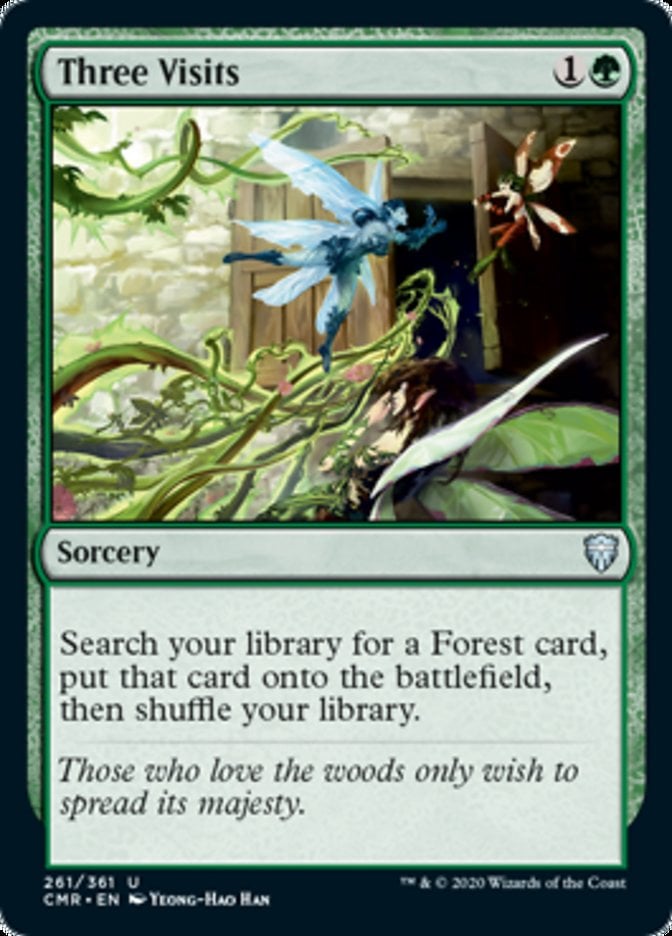
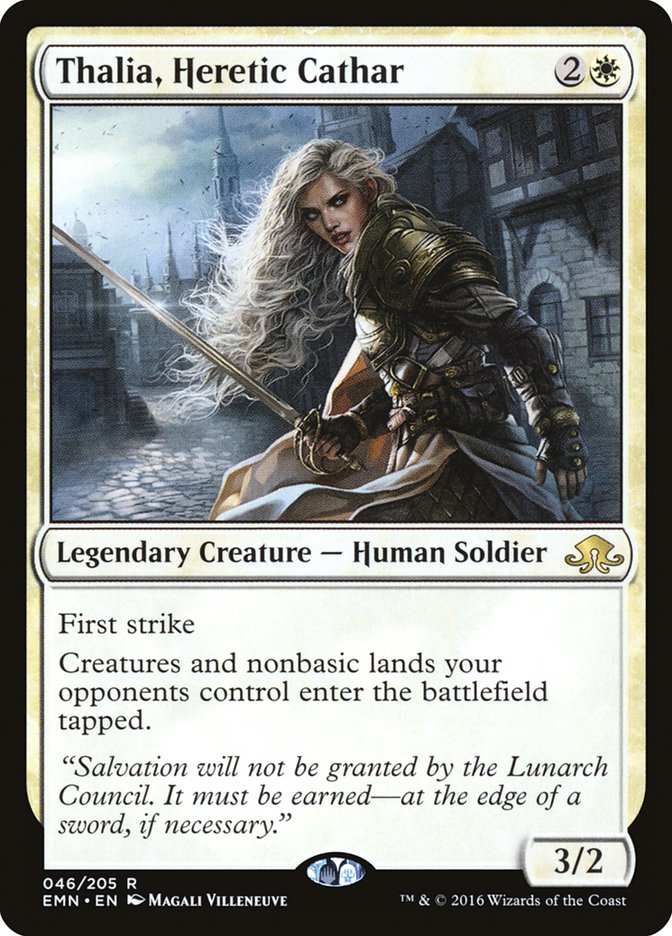
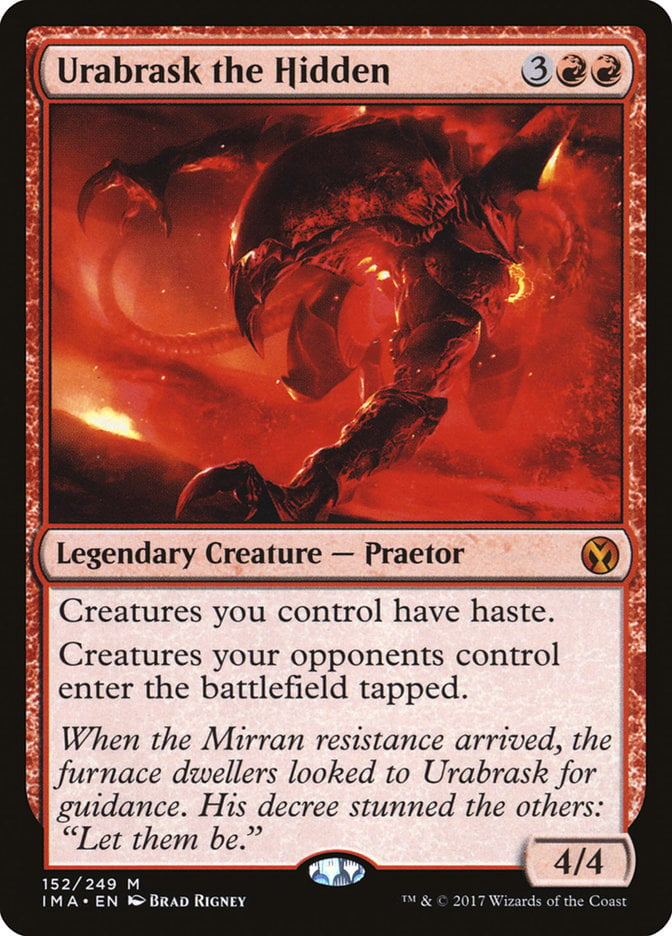

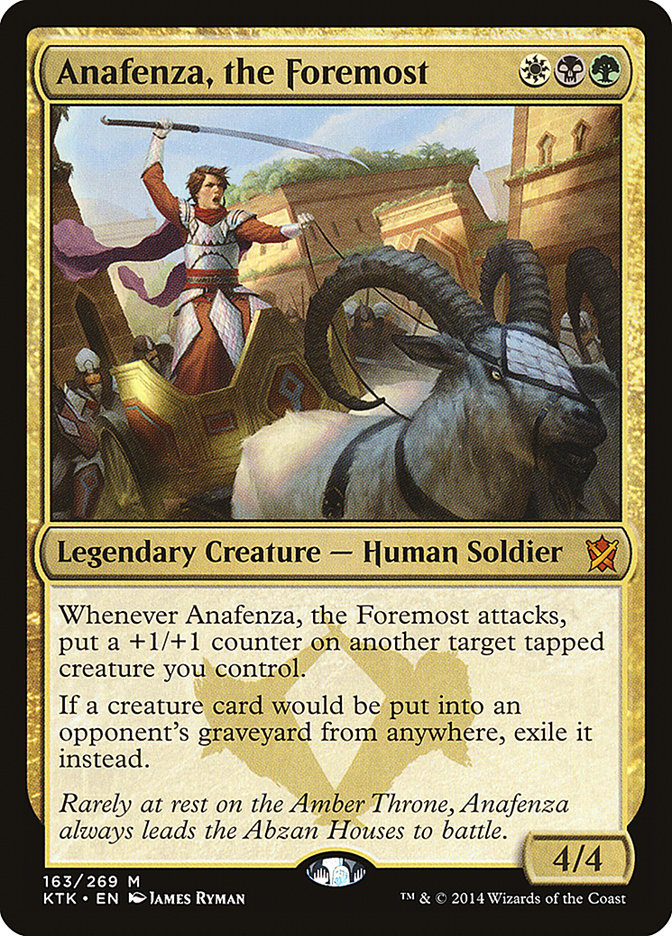
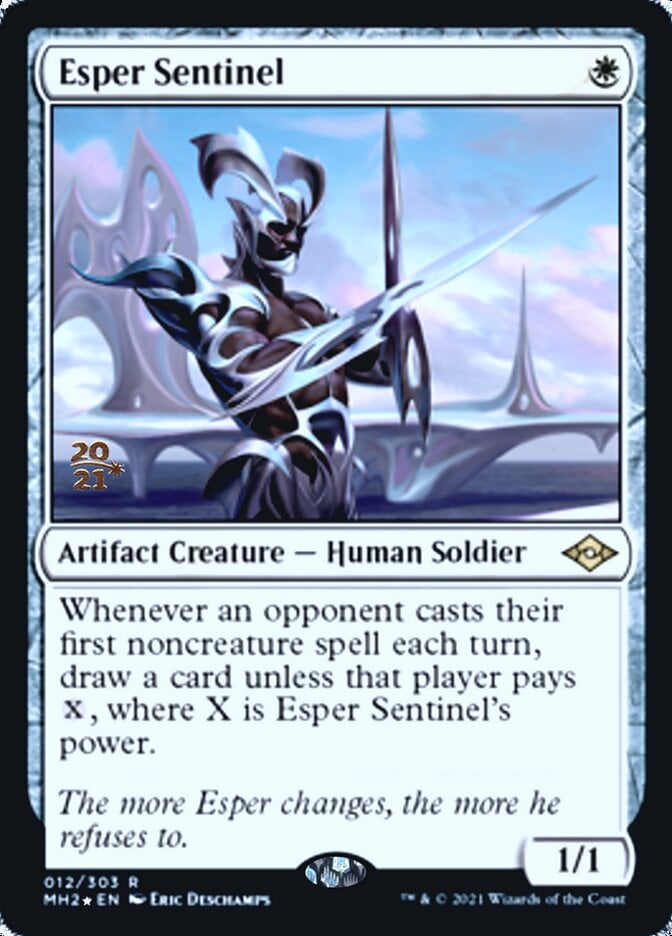
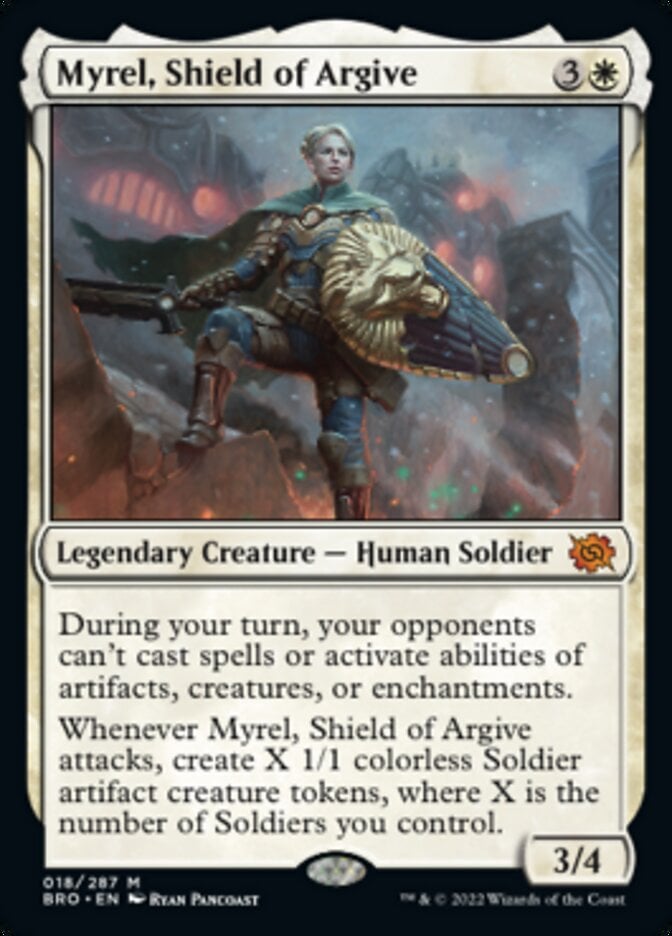
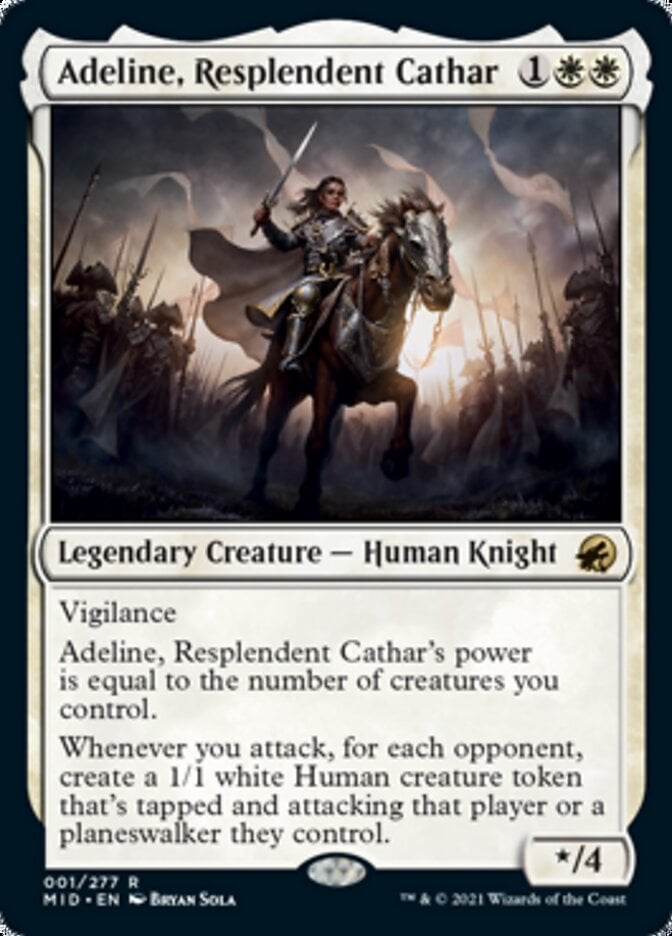


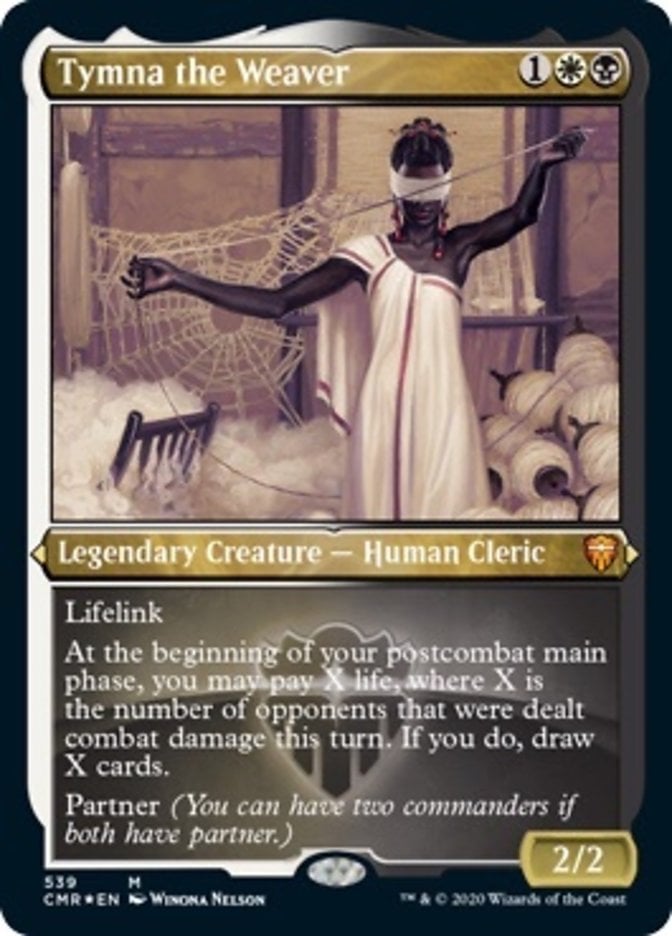
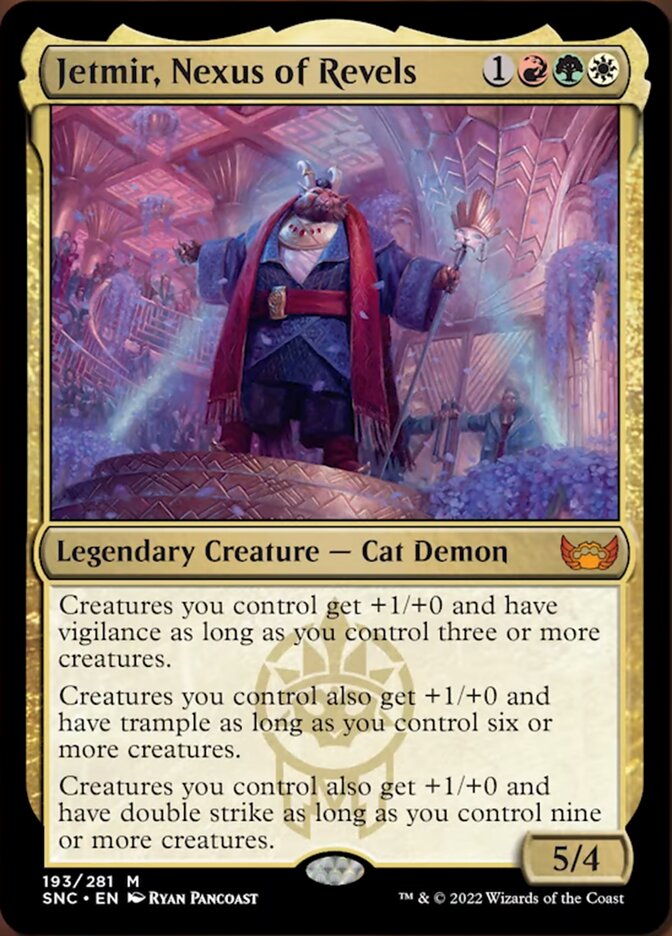
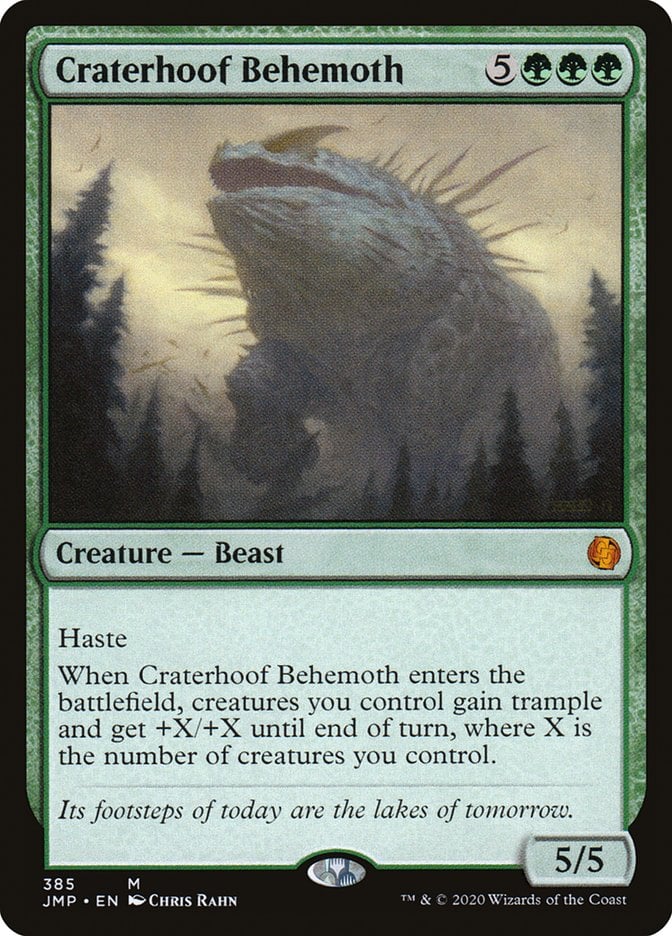
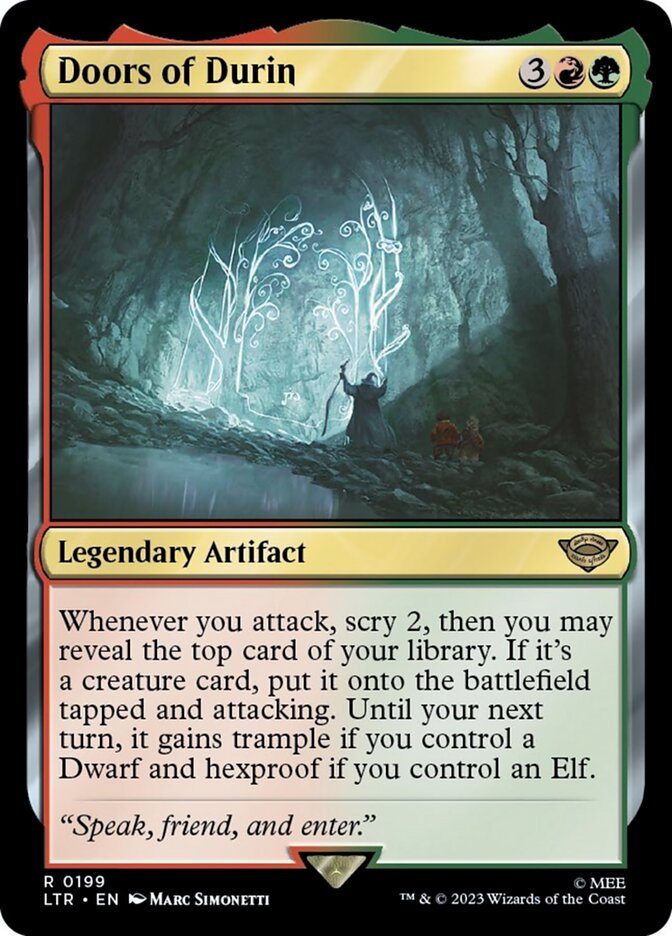
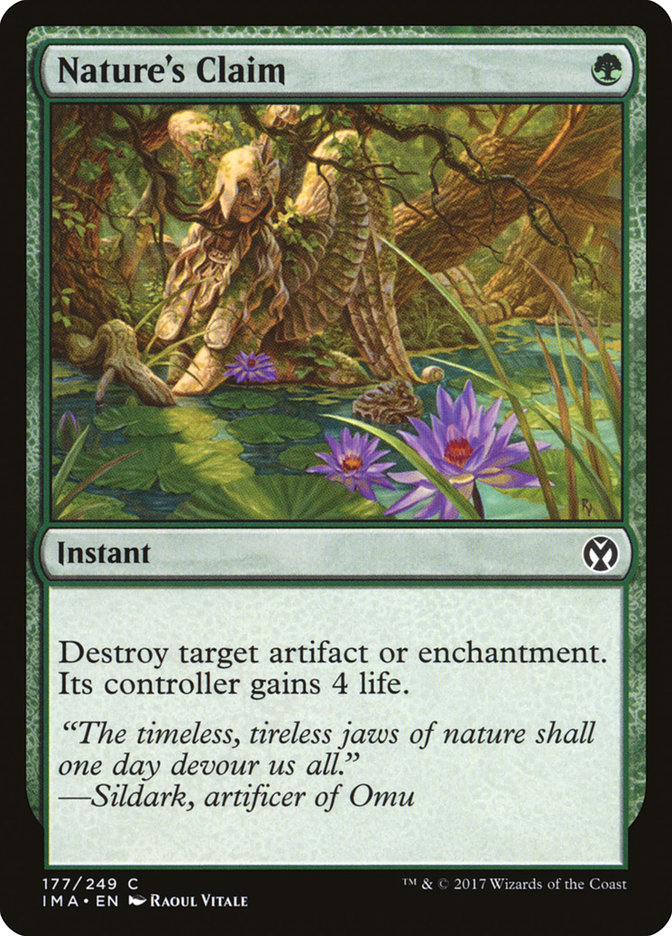
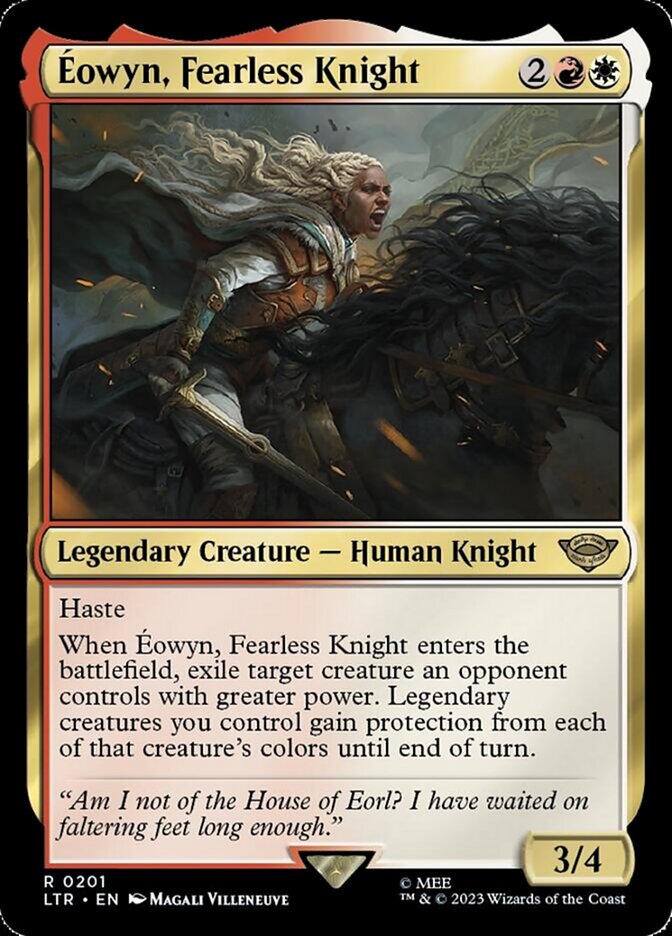
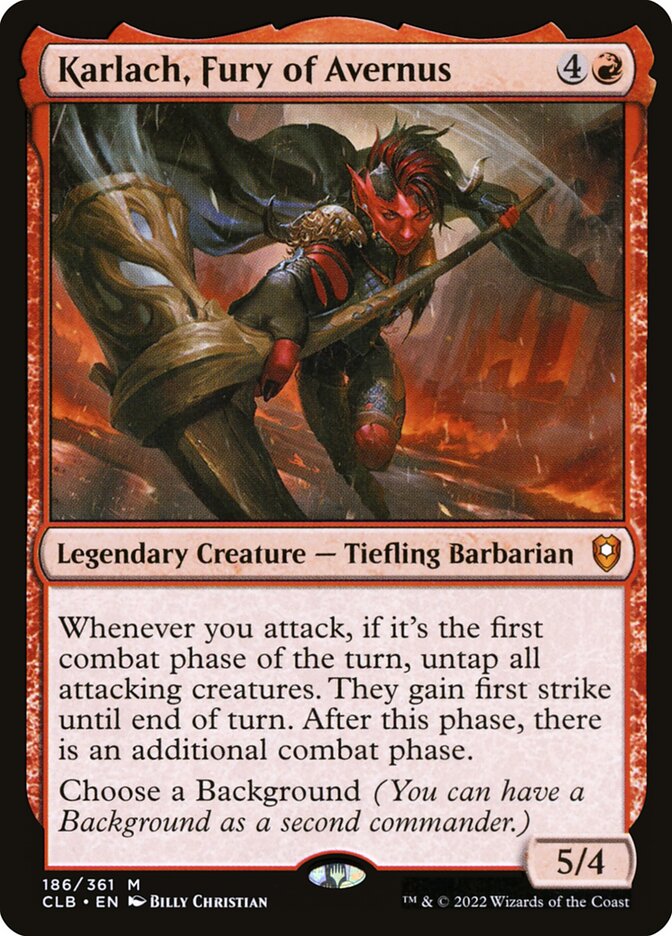
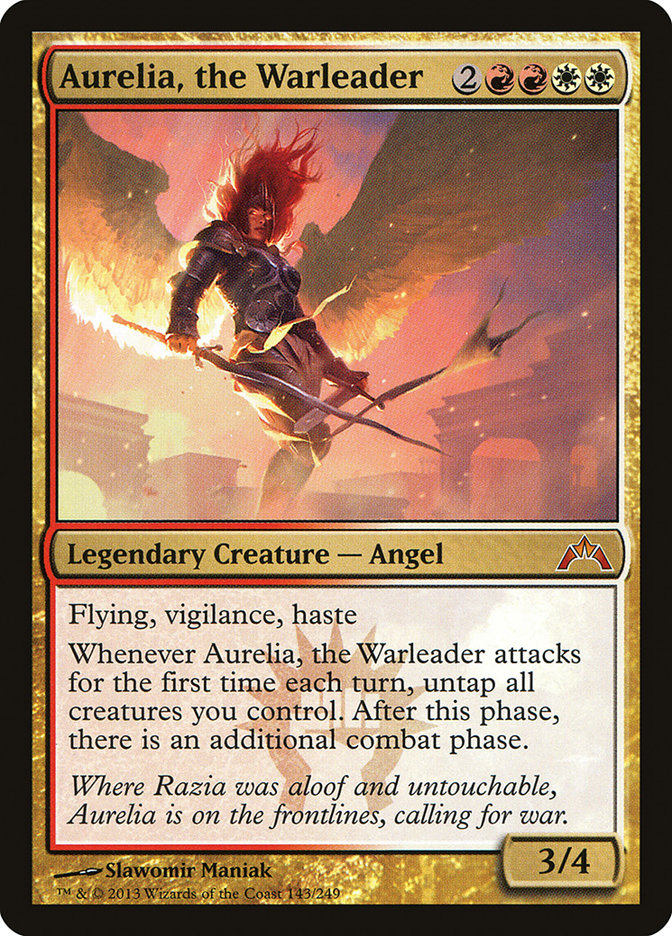
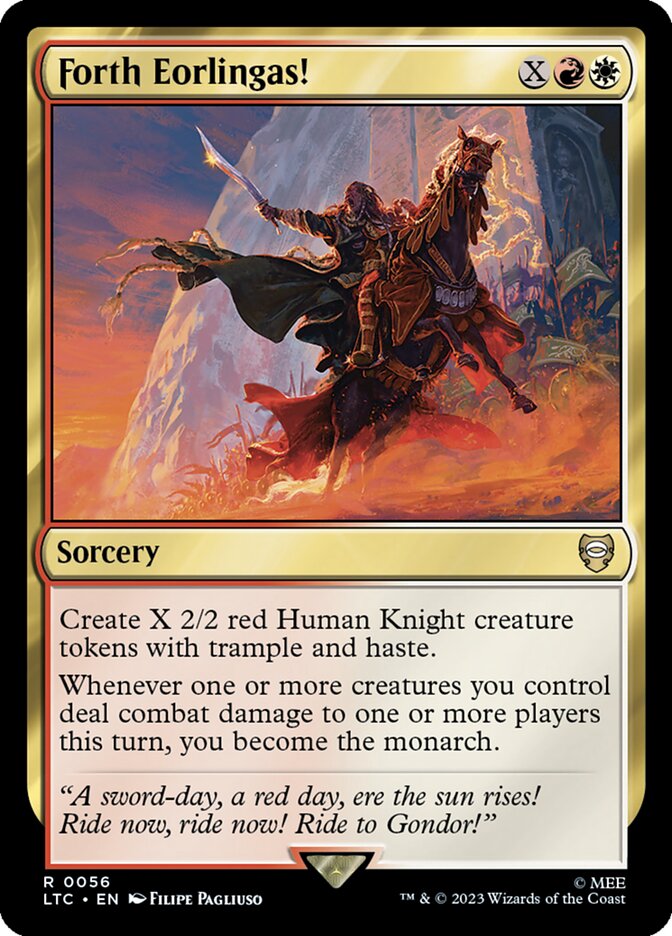
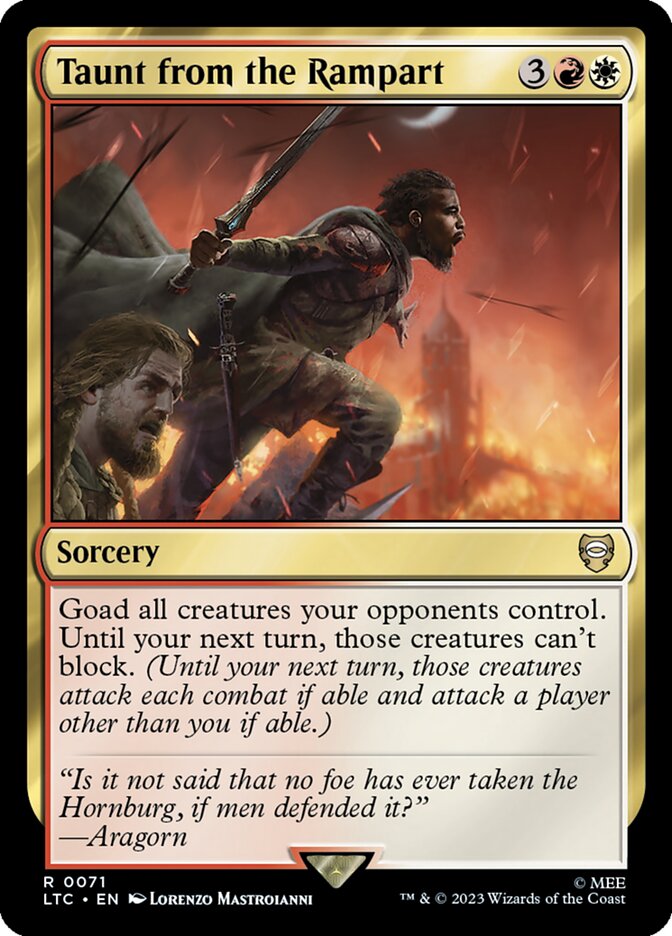

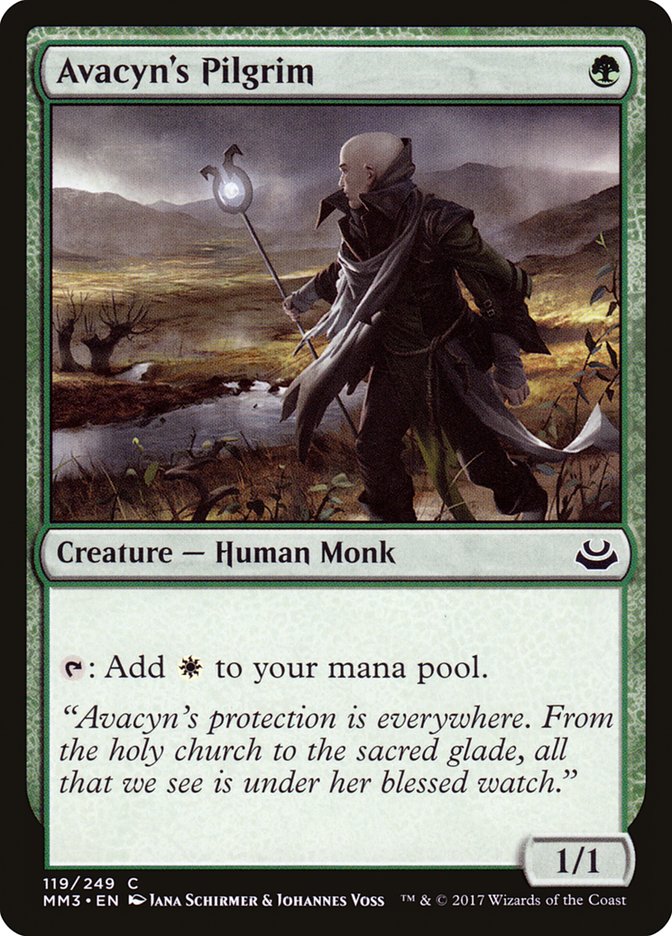
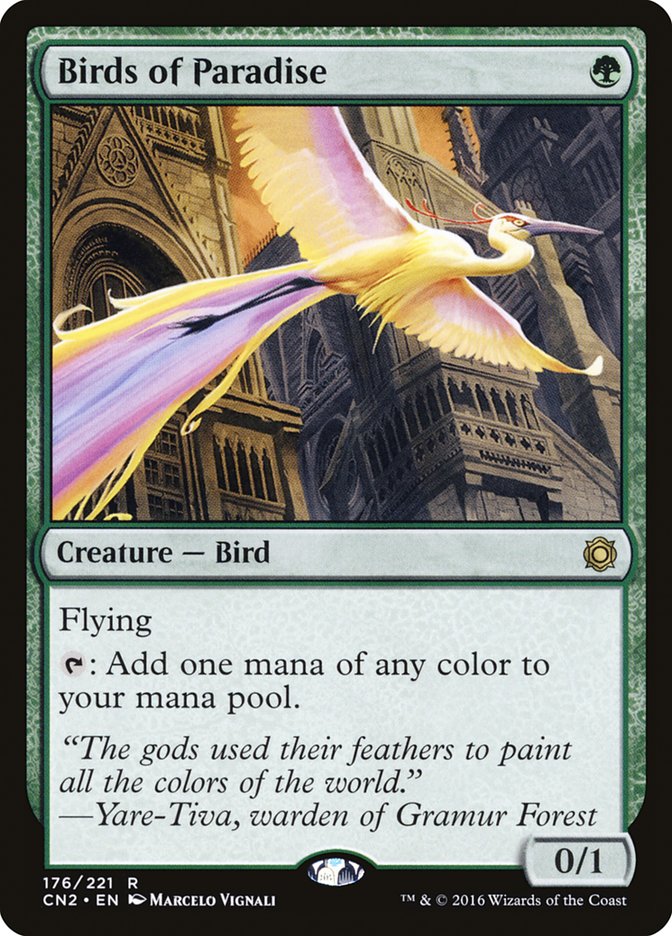
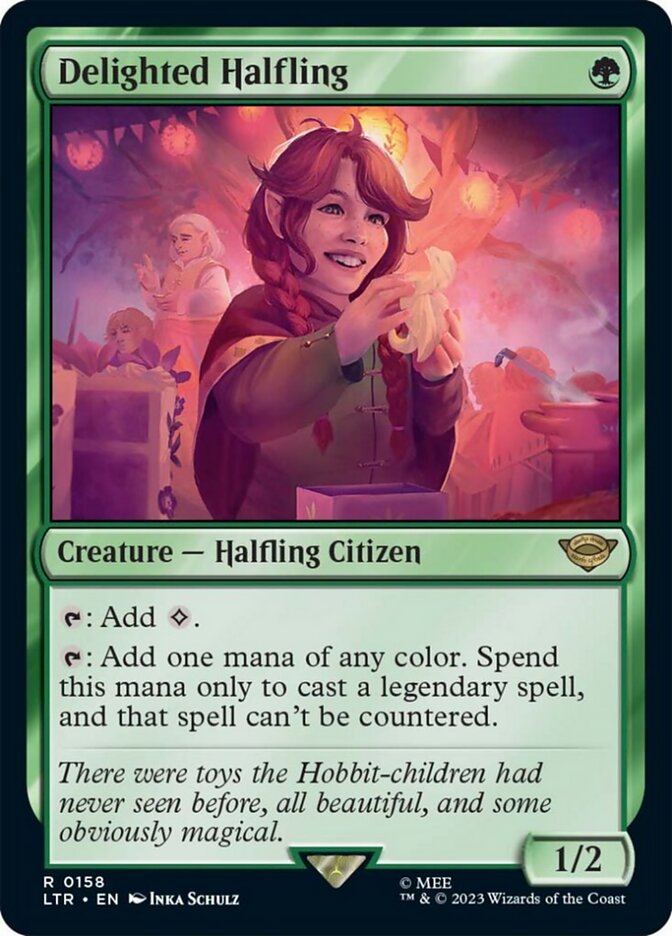
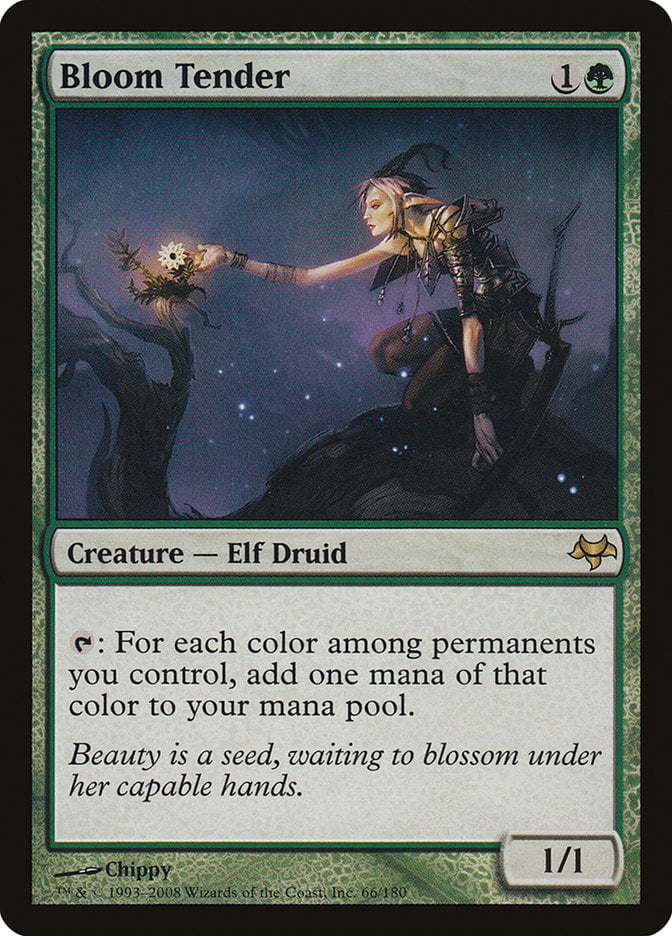
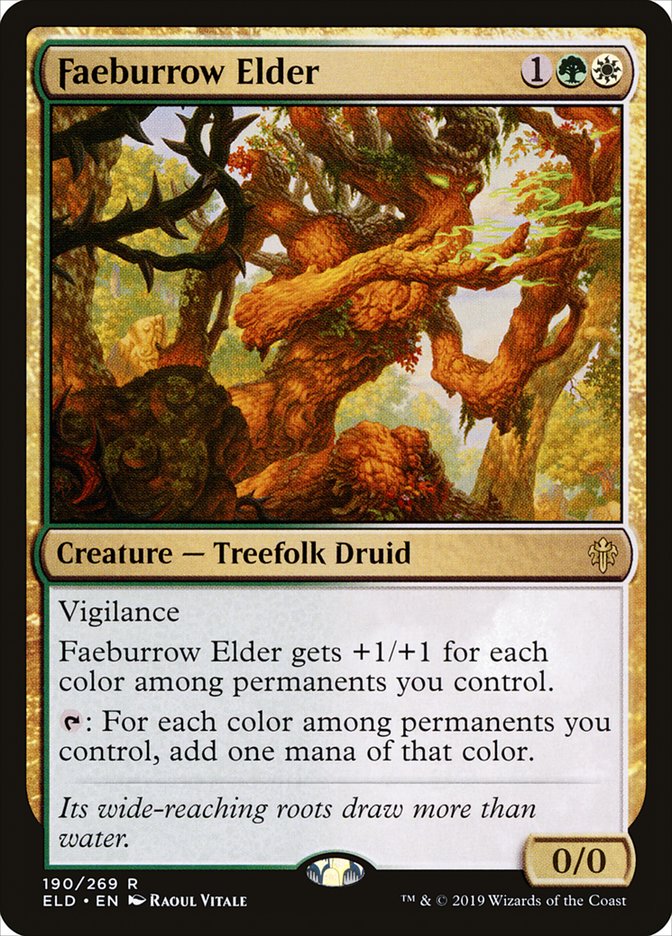
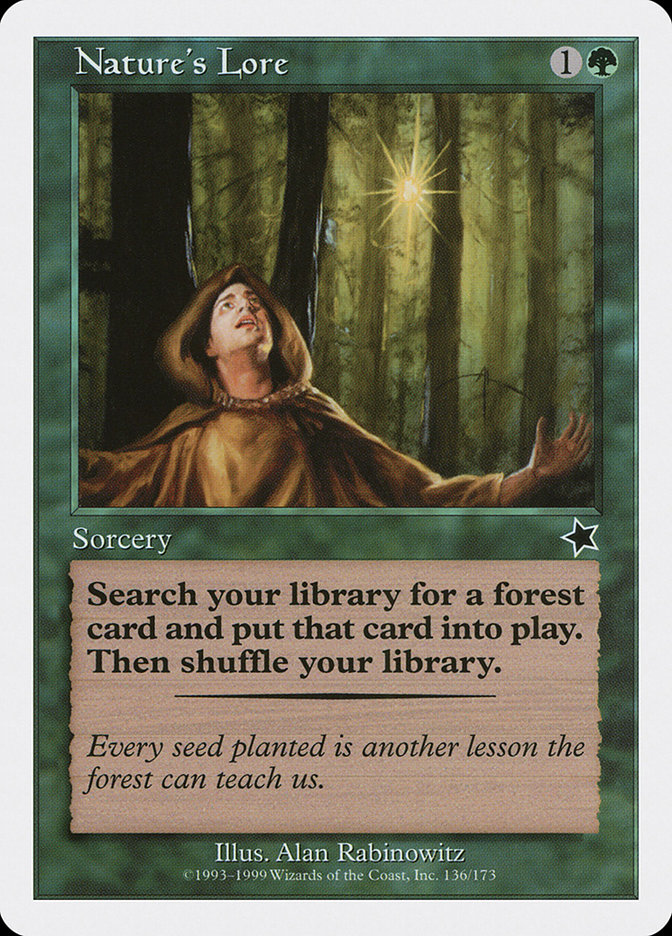
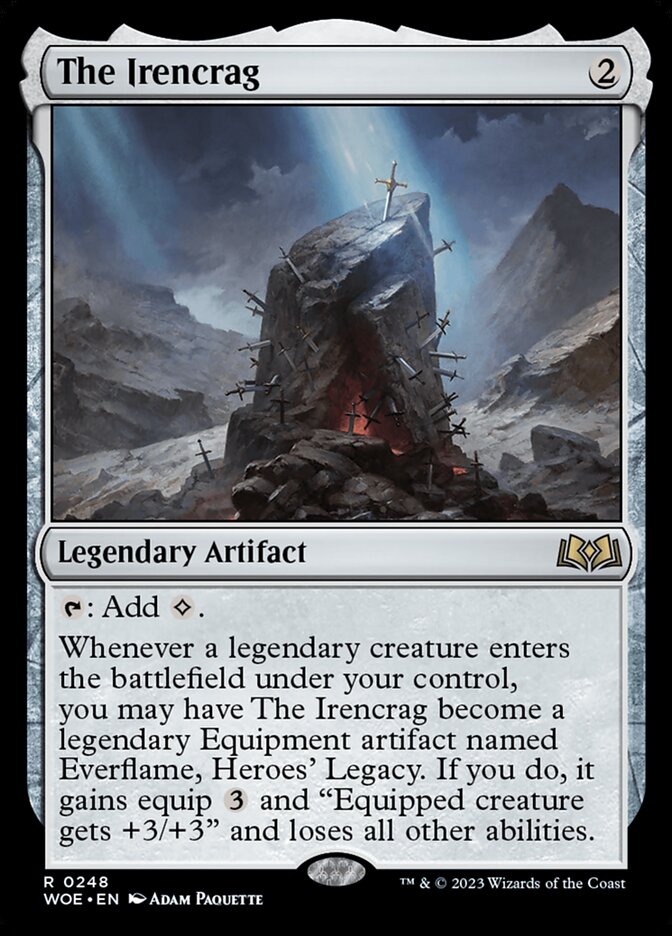
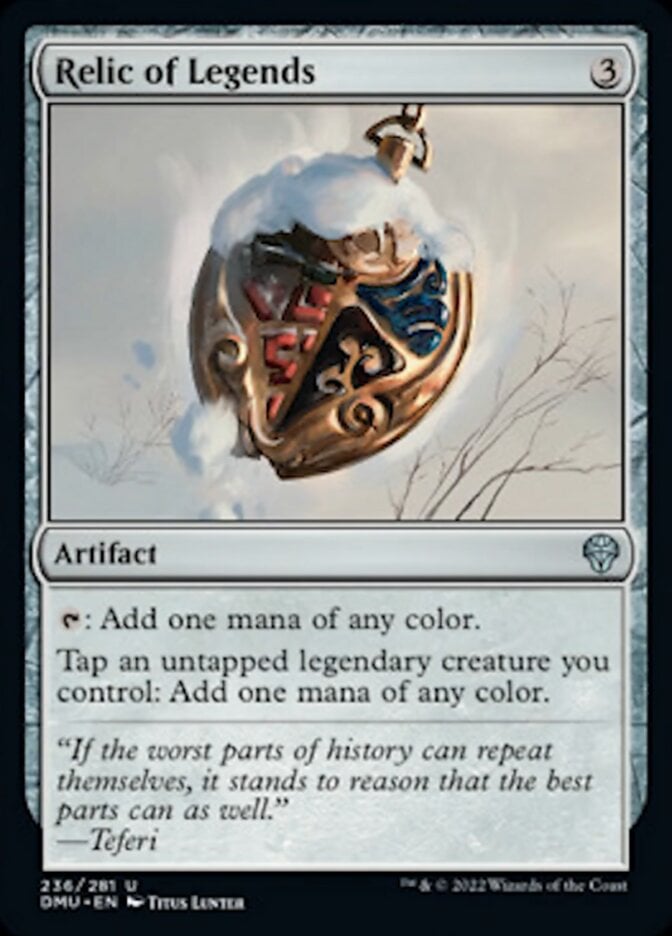

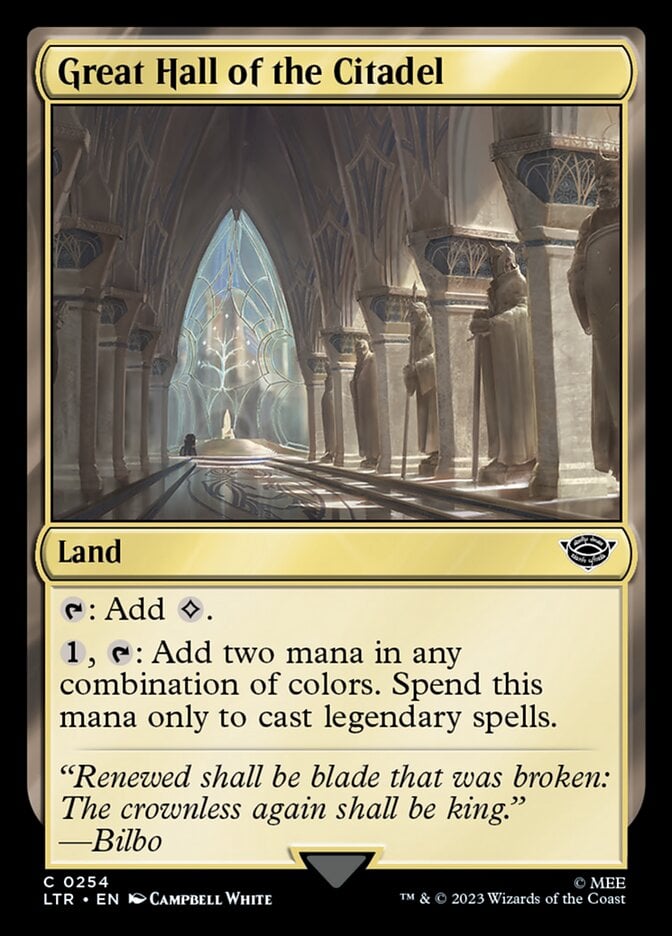
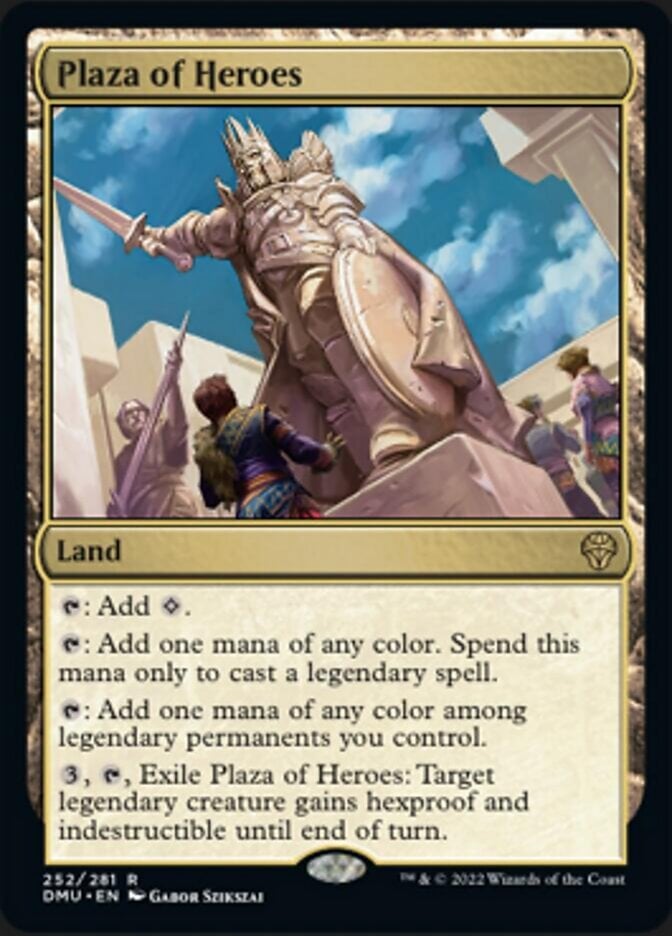

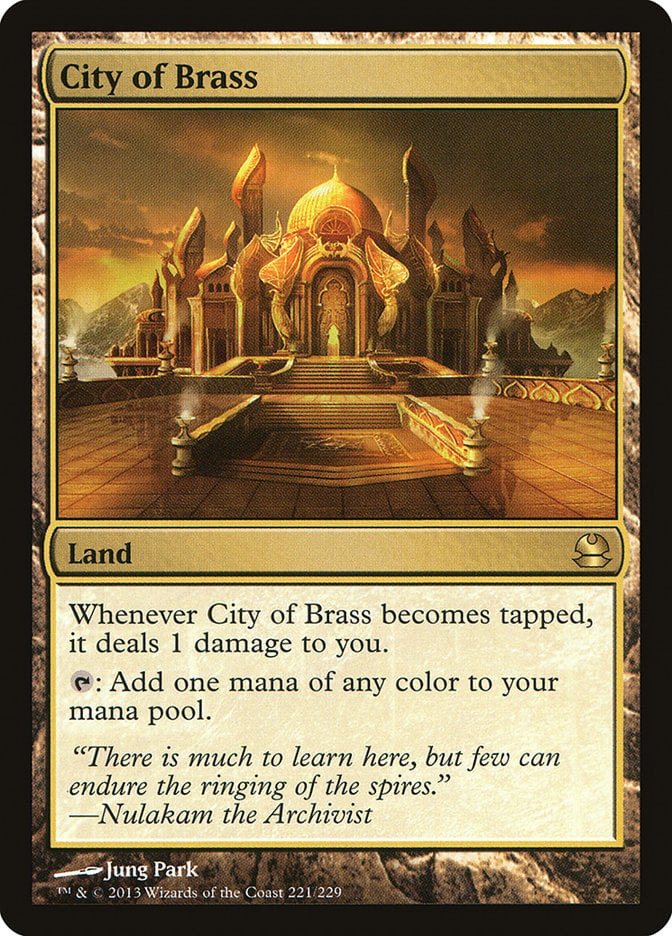
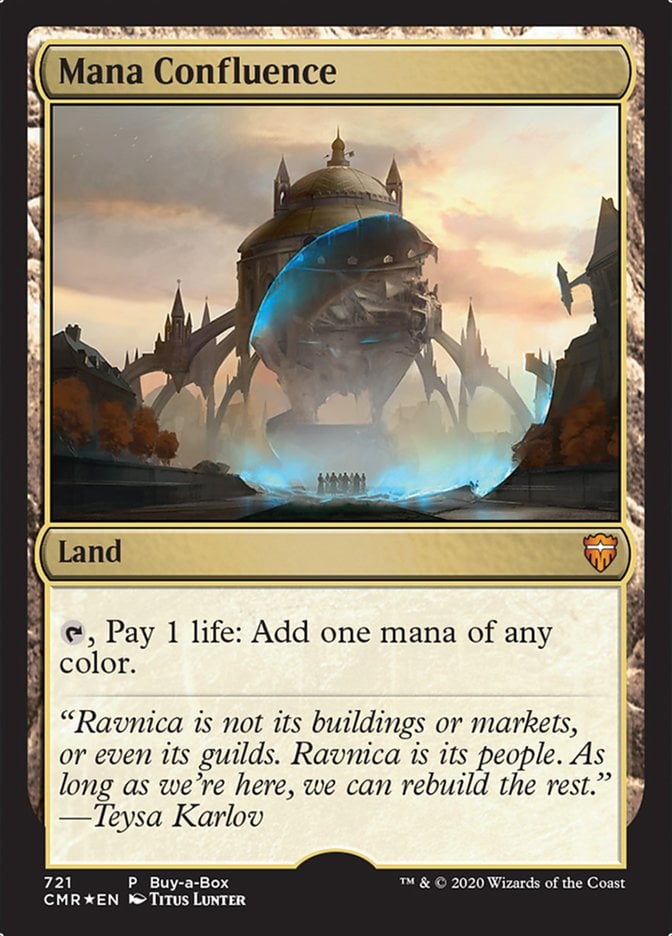
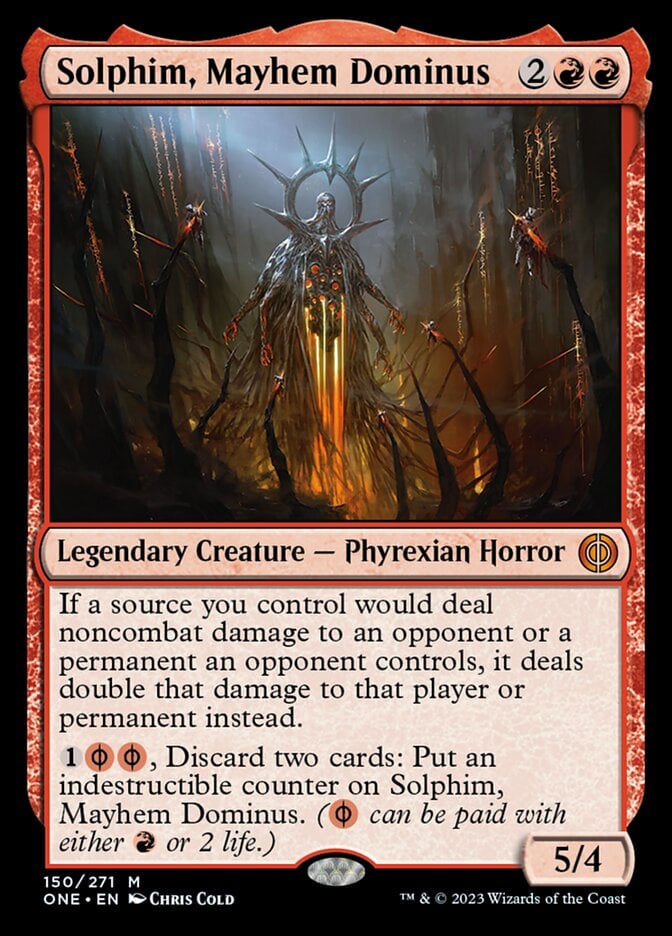
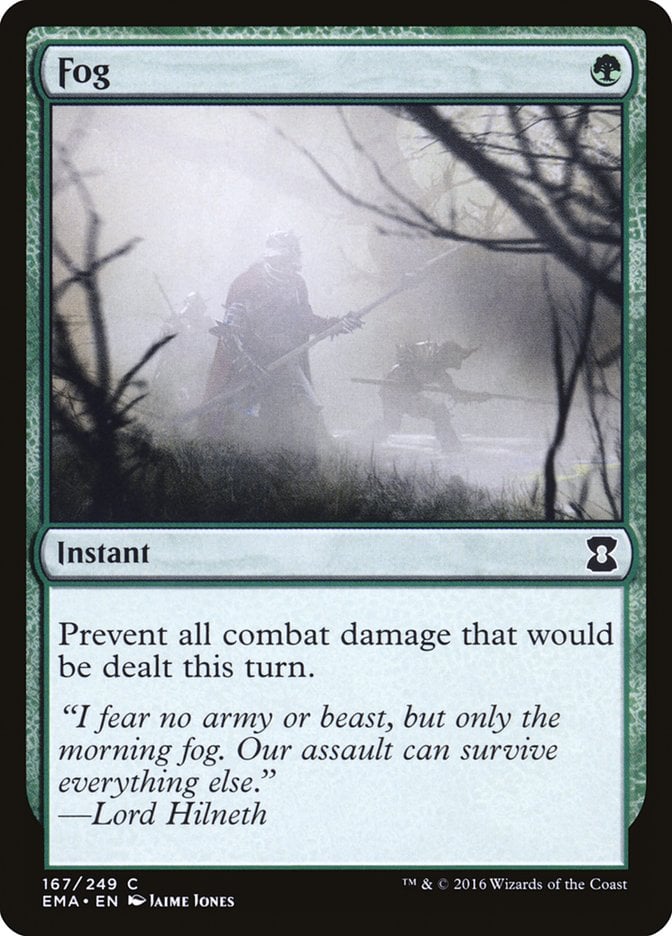
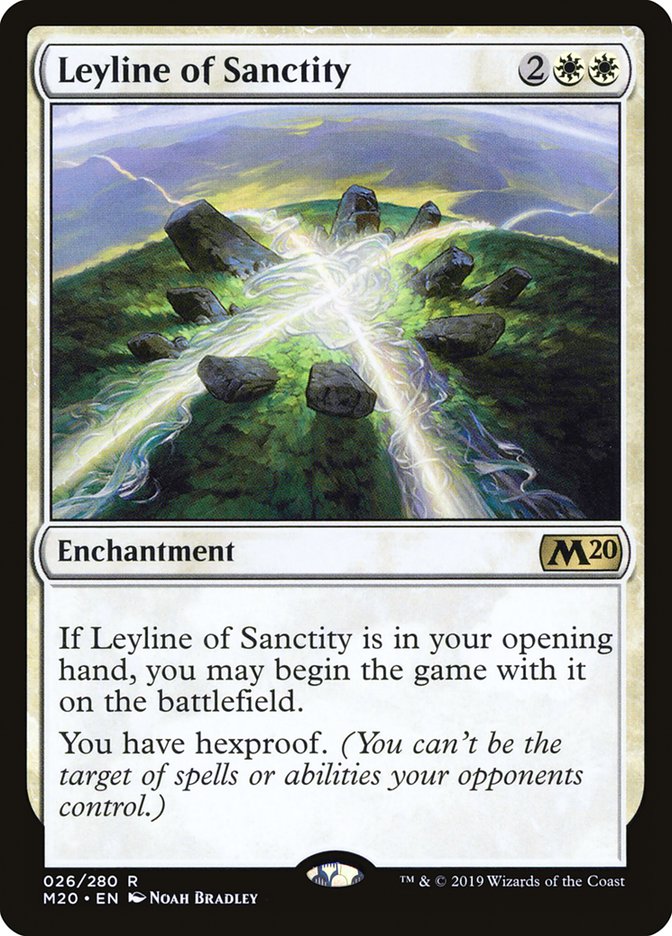
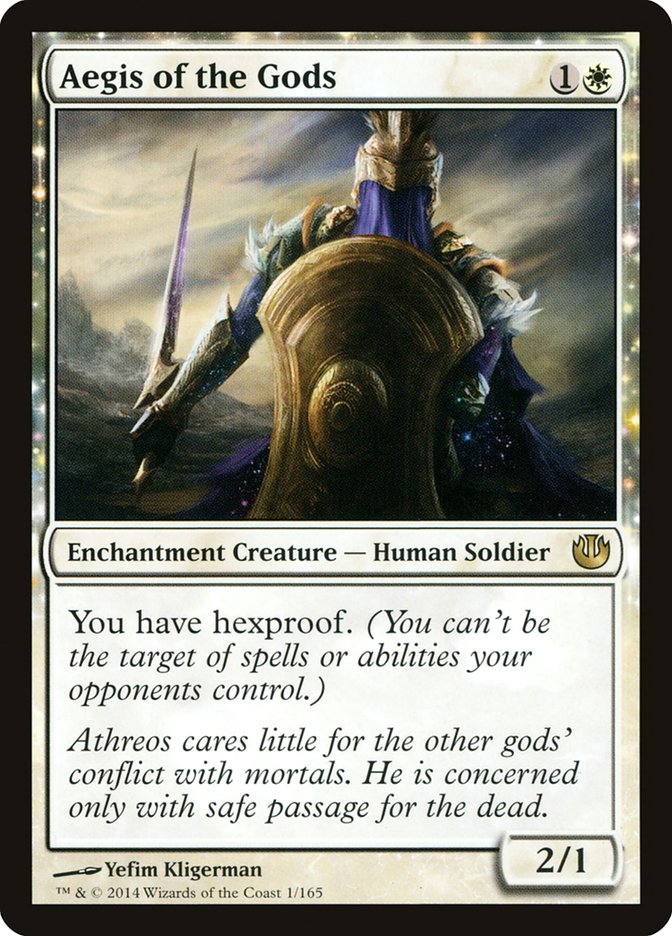
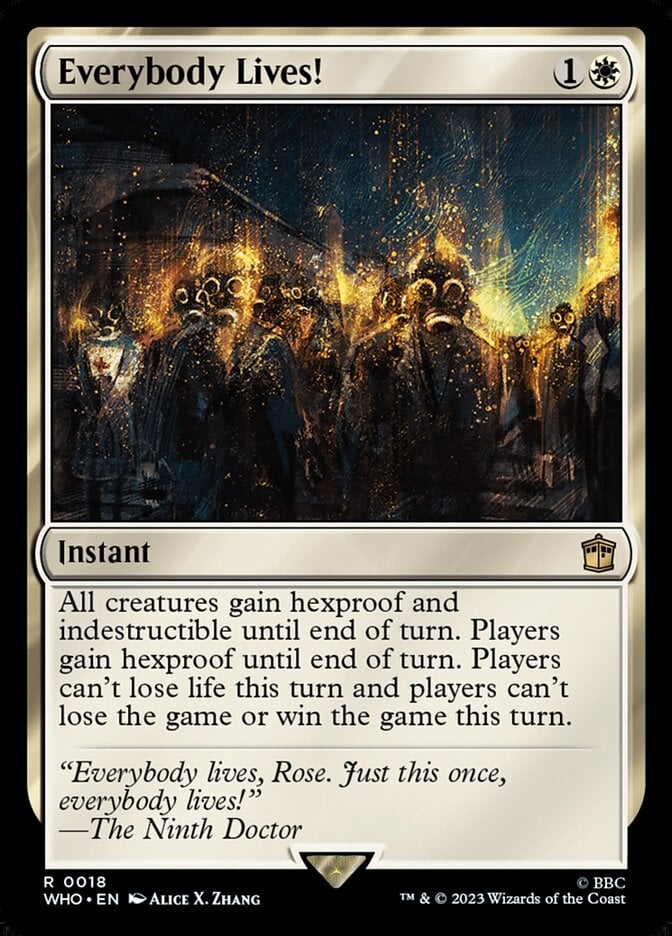

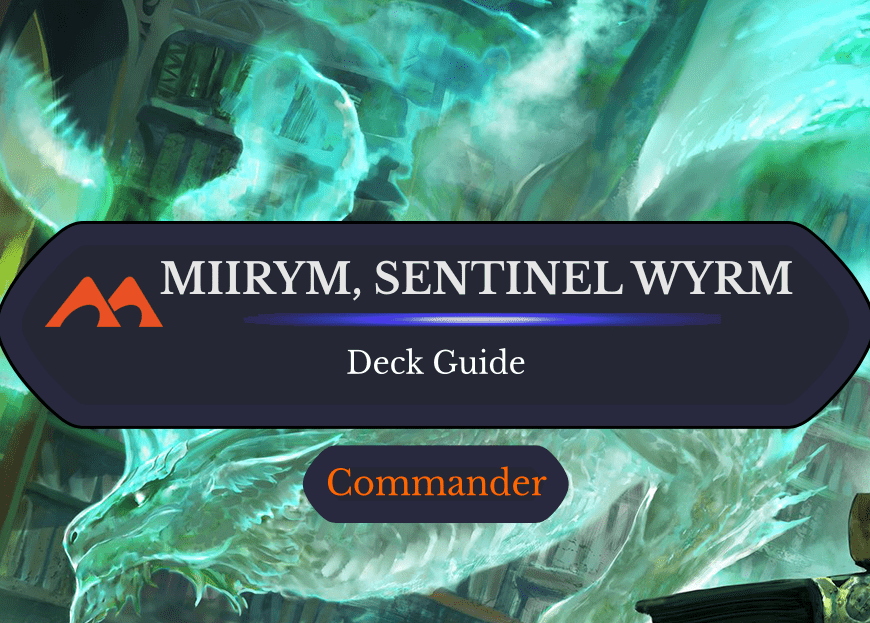
Add Comment